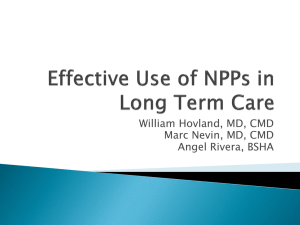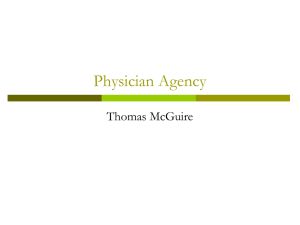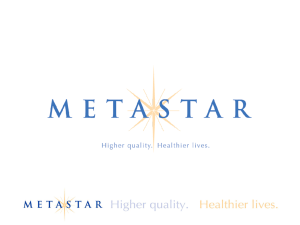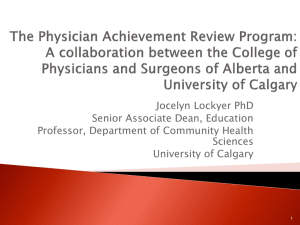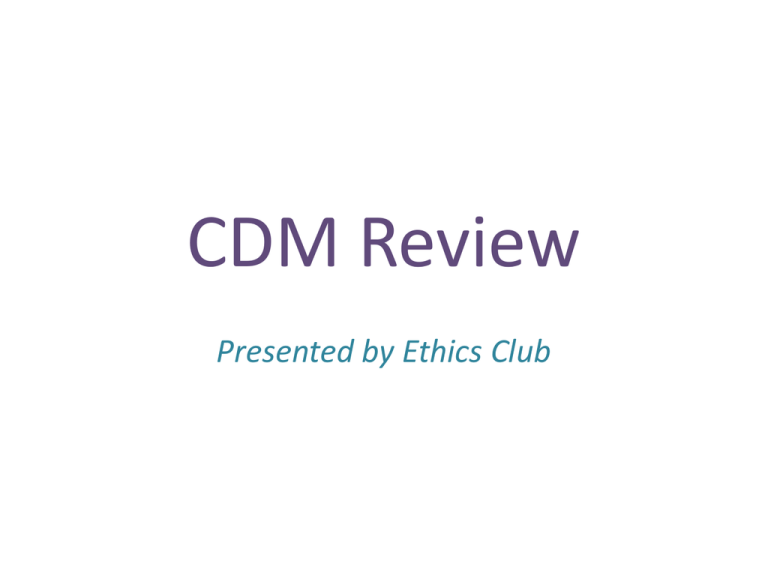
CDM Review
Presented by Ethics Club
DISCLAIMER
• The following questions and review may in no
way reflect the actual CDM written exam
• Ethics Club is not responsible for any incorrect
information presented in this review
• Ethics Club shall not be responsible if this
review does not help you on the exam
Question 1:
Asking your patient, “can you tell me
about your chest pain?” is an example
of:
a)
b)
c)
d)
a focused question
validating
an open-ended question
a closed question
Question 1:
Asking your patient, “can you tell me
about your chest pain?” is an example
of:
a) a focused question- asks about a particular
subject
b) validating- communicates acceptance of the
patient’s emotional response
c) an open-ended question
d) a closed question- range of possible answers
is restricted
Question 2:
Disease differs from illness in that:
a) illness is acute, while disease is chronic
b) disease is chronic, while illness is acute
c) illness is the physician’s way of explaining the
patient’s problems using organs and systems,
whereas disease is the patient’s personal
experience of ill health
d) disease is the physician’s way of explaining the
patient’s problems using organs and systems,
whereas illness is the patient’s personal
experience of ill health
Question 2:
Disease differs from illness in that:
a) illness is acute, while disease is chronic
b) disease is chronic, while illness is acute
c) illness is the physician’s way of explaining the
patient’s problems using organs and systems,
whereas disease is the patient’s personal
experience of ill health
d) disease is the physician’s way of explaining the
patient’s problems using organs and systems,
whereas illness is the patient’s personal
experience of ill health
Question 3:
When obtaining the HPI, what
question do each of the letters in the
mnemonic FAR COLDER ask?
FARCOLDER-
Question 3:
When obtaining the HPI, what
question do each of the letters in the
mnemonic FAR COLDER ask?
F- Frequency
A- Associated Symptoms
R- Radiation
C- Character
O- Onset
L- Location
D- Duration
E- Exacerbating Factors
R- Remitting Factors
Question 4:
The CAGE questions are used in which
special interviewing topic?
a)
b)
c)
d)
interpersonal violence
alcohol abuse
depression
tobacco abuse
Question 4:
The CAGE questions are used in which
special interviewing topic?
a) interpersonal violence
b) alcohol abuse
C = cut down
A = annoyed
G = guilty
E = eye opener
a) depression
b) tobacco abuse
Question 5:
Which of the following would NOT
make a patient feel vulnerable?
a)
b)
c)
d)
unfamiliar surroundings
dependence of the physician
being a minority
all of the above can make a patient feel
vulnerable
Question 5:
Which of the following would NOT
make a patient feel vulnerable?
a)
b)
c)
d)
unfamiliar surroundings
dependence of the physician
being a minority
all of the above can make a patient feel
vulnerable
Question 6:
What is the name of the law that
prohibits group health insurance plans
and issuers of coverage from basing
eligibility or adjusting premiums on
the basis of genetic information?
a)
b)
c)
d)
Nondiscrimination Information Act
Genetic Nondiscrimination Act
Discrimination Prevention Act
Don’t Ask, Don’t Tell
Question 6:
What is the name of the law that
prohibits group health insurance plans
and issuers of coverage from basing
eligibility or adjusting premiums on
the basis of genetic information?
a)
b)
c)
d)
Nondiscrimination Information Act
Genetic Nondiscrimination Act
Discrimination Prevention Act
Don’t Ask, Don’t Tell
Question 7:
Cultural competence:
a) moves us toward ethnocentricity
b) occurs naturally in all first year med students
c) is the passive application of awareness and
knowledge used to support recovery
d) requires extensive knowledge of different
cultures
e) none of the above are true
Question 7:
Cultural competence:
a) moves us toward ethnocentricity
b) occurs naturally in all first year med students
c) is the passive application of awareness and knowledge
used to support recovery
d) requires extensive knowledge of different cultures
e) none of the above are true
Explanation: Cultural competence does not occur naturally
and therefore requires the active application of awareness
and knowledge. However, this knowledge does not need
to be extensive for each culture; a simple understanding
of different cultures is sufficient. Cultural competence
also moves us away from ethnocentricity, which is defined
as using our own cultural rules to make judgments about
people who are different.
Question 8:
What is the proper way to correct an
error in a SOAP note?
a) scribbling out the error, dating, timing, and
signing
b) white out the error, dating, timing, and
signing
c) crossing out the error with a single line,
dating, timing, and signing
d) highlighting the error, dating, timing, and
signing
Question 8:
What is the proper way to correct an
error in a SOAP note?
a) scribbling out the error, dating, timing, and
signing
b) white out the error, dating, timing, and
signing
c) crossing out the error with a single line,
dating, timing, and signing
d) highlighting the error, dating, timing, and
signing
Question 9:
Medical paternalism can be defined as:
a) patients and physicians working together to
make medical decisions
b) physicians making decisions for their patients
based on what they believe is in the patients’
best interest
c) physicians making decisions for their patients
based on their own (the physician’s own)
beliefs
d) none of the above define paternalism
Question 9:
Medical paternalism can be defined as:
a) patients and physicians working together to
make medical decisions
b) physicians making decisions for their patients
based on what they believe is in the patients’
best interest
c) physicians making decisions for their patients
based on their own (the physician’s own)
beliefs
d) none of the above define paternalism
Question 10:
Which of the following is NOT an
ethical argument against genetic
testing?
a) genetic testing may enable the correlation of
disease to genes
b) genetic testing provides information about
relatives as well as the proband
c) genetic information might lead to stigma and
discrimination
d) patients might overestimate the impact of
genes on disease or behavior
Question 10:
Which of the following is NOT an
ethical argument against genetic
testing?
a) genetic testing may enable the correlation of
disease to genes- this is a good thing!
b) genetic testing provides information about
relatives as well as the proband
c) genetic information might lead to stigma and
discrimination
d) patients might overestimate the impact of
genes on disease or behavior
Question 11:
Which of the following is true
regarding interpersonal violence?
a) women who are victims of violence often
don’t know their attacker
b) women between the ages of 60-65 are at the
greatest risk for intimate partner violence
c) more men than women are stalked in their
lifetime
d) children who witness violence in the home
are more likely to beat their own children
Question 11:
Which of the following is true
regarding interpersonal violence?
a) women who are victims of violence often don’t
know their attacker- females are most often
victimized by someone they know
b) women between the ages of 60-65 are at the
greatest risk for intimate partner violencewomen aged 20-24 are at the greatest risk
c) more men than women are stalked in their
lifetime- women are more likely to be stalked
d) children who witness violence in the home are
more likely to beat their own children
Question 12:
List each step of the LEARN model.
LEARN-
Question 12:
List each step of the LEARN model.
L- Listen
E- Explain
A- Acknowledge
R- Recommend
N- Negotiate
Question 13:
Ensuring that a patient’s decision on
treatment is free from coercion is an
example of which of the following
bioethical principles?
a)
b)
c)
d)
beneficence
non-maleficence
autonomy
justice
Question 13:
Ensuring that a patient’s decision on
treatment is free from coercion is an
example of which of the following
bioethical principles?
a) beneficence- doing what’s in the patient’s best
interest
b) non-maleficence- do no harm
c) autonomy- free from interference and control of
others
d) justice- they never gave us a good definition of
this last year, but we were asked to define it on
the test….good luck with that
Question 14:
Which of the following is NOT a
conflict of interest?
a)
b)
c)
d)
physicians who do research on their patients
an alcoholic physician
product sales in the physician’s office
a cardiologist with a heart defect
Question 14:
Which of the following is NOT a
conflict of interest?
a) physicians who do research on their patientsdual role of physician and investigator
b) an alcoholic physician- colleagues may be torn
between helping the physician and allowing the
physician to help his/her own patients
c) product sales in the physician’s office- patients
might think these products are more legit
d) a cardiologist with a heart defect- that’s just
ironic (unless of course it’s interfering with
his/her ability to work)
Question 15:
An African American woman with diabetes and
renal failure has not been placed on the wait-list
for a kidney transplant. A white woman with the
exact same history and disease progression has
received a transplant. These differences are
called:
a)
b)
c)
d)
discrimination
disparities
favoritism
prejudice
Question 15:
An African American woman with diabetes and
renal failure has not been placed on the wait-list
for a kidney transplant. A white woman with the
exact same history and disease progression has
received a transplant. These differences are
called:
a)
b)
c)
d)
discrimination
disparities
favoritism
prejudice
Question 16:
Which of the following is NOT one of
the “5 P’s” of sexual history (i.e. which
“P” is not asked when obtaining a
sexual history)?
a)
b)
c)
d)
e)
f)
penis problems
protection from STDs
practices
partners
prevention of pregnancy
past STDs
Question 16:
Which of the following is NOT one of
the “5 P’s” of sexual history (i.e. which
“P” is not asked when obtaining a
sexual history)?
a) penis problems- probably important to know,
but is not one of the 5 P’s
b) protection from STDs
c) practices
d) partners
e) prevention of pregnancy
f) past STDs
Question 17:
Sighing is an example of:
a)
b)
c)
d)
reassuring
non-verbal communication
confronting
verbal communication
Question 17:
Sighing is an example of:
a) reassuring- puts the patient at ease
b) non-verbal communication
c) confronting- draws attention to something
the patient is unconsciously doing or is
purposely trying to avoid
d) verbal communication- this requires words
Question 18:
Define justice.
Question 18:
Define justice.
Justice is generally used to mean fairness. In
medicine, this means treating similar patients
similarly. It can also refer to the allocation of
health care resources.
For a question like this, they’ll probably give a
point for the first sentence, and a point for
the second.
Question 19:
In diagnosing depression, either
depressed mood or this symptom
must be present:
a)
b)
c)
d)
feelings of worthlessness or guilt
fatigue or loss of energy
anhedonia
Impaired concentration
Question 19:
In diagnosing depression, either
depressed mood or this symptom
must be present:
a)
b)
c)
d)
feelings of worthlessness or guilt
fatigue or loss of energy
anhedonia
Impaired concentration
Explanation: Anhedonia is diminished interest or
pleasure in all activities. To diagnose depression,
5 total symptoms must be present, and one
must be either depressed mood or anhedonia.
Question 20:
Trying to announce T-shirt tiiiime, The Situation walks in on
Snooki smushing with Vinny. Upset, Vinny throws Snooki at
The Situation, but misses and hits J-Woww who falls and
hits her head. Using the bioethical principle of _________,
J-Woww refuses to go to the ER. The roommates, worried
about J-Woww’s health and considering what they learned
in CDM, think that their bioethical principle of ________
overrules J-Woww, and they call an ambulance.
a)
b)
c)
d)
justice, beneficence
autonomy, beneficence
autonomy, non-maleficence
beneficence, beneficence
Question 20:
Trying to announce T-shirt tiiiime, The Situation walks in on
Snooki smushing with Vinny. Upset, Vinny throws Snooki at
The Situation, but misses and hits J-Woww who falls and
hits her head. Using the bioethical principle of _________,
J-Woww refuses to go to the ER. The roommates, worried
about J-Woww’s health and considering what they learned
in CDM, think that their bioethical principle of ________
overrules J-Woww, and they call an ambulance.
a) justice, beneficence
b) autonomy, beneficence- J-Woww has the right to
make her own health care decisions, but the
roommates know that she’s probably drunk (or
concussed) and not thinking clearly, and just want to
help her
c) autonomy, non-maleficence
d) beneficence, beneficence
Other Stuff
• Statistics
• Lecture on locating professional resources?
• Questions?
• Equipment sale in the lobby!
• AMA Halloween Party tonight


